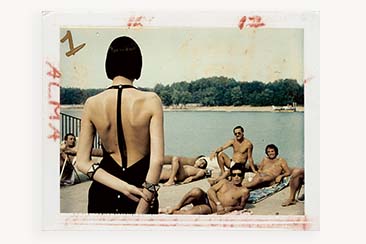You are never far away from one of this century’s most overlooked yet iconic objects. There might even be one in your pocket right now, or lying on the desk, or forgotten in a bottom drawer. The ubiquitous memory card has evolved to become smaller than a fingertip yet big enough to hold thousands of photographs; music files; names; numbers … whole lives, and their memories.
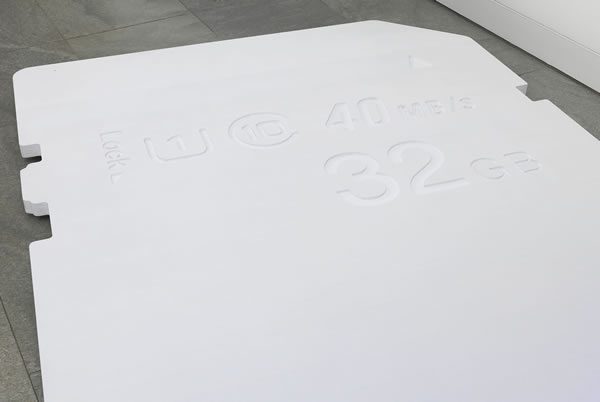
The design of the SD memory card is instantly recognisable, and yet from the moment they are popped from their plastic packaging and slipped into their host device they are largely ignored, accessed by proxy through a phone or a camera, silently remembering.
There’s nothing forgettable or unobtrusive about Dennis Loesch‘s SD cards, however. Seven of his scaled-up models currently occupy Dittrich & Schlechtriem‘s gallery space in Berlin, and they demand attention. Measuring two metres high, the wooden objects replicate the familiar SD card shape perfectly, down to the subtle notches and clipped edge, and carry the embossed technical information of transfer speed and capacity.
Loesch invites the viewer to consider them as sculptural objects, their increased proportions allowing for a more thorough appreciation of their form. He also explores their role as media for other data imagery; several of the cards carry screensaver patterns and pixelated graphics, the lurid colours subverting expectations of the traditional matte black of electronic chips. The collection, titled DEF, closes on 31 October.
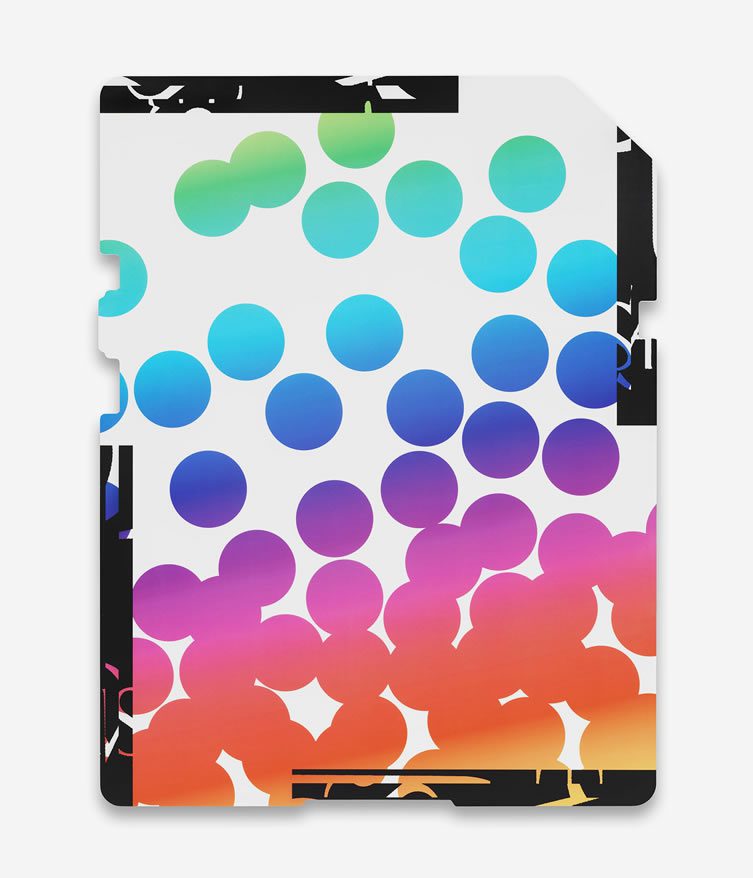
THE YSL BALL GRADIENT, 2015
Inkjet print and plywood Unique
200 x 153 x 4 cm / 78 3/4 x 60 1/4 x 1 1/2 in
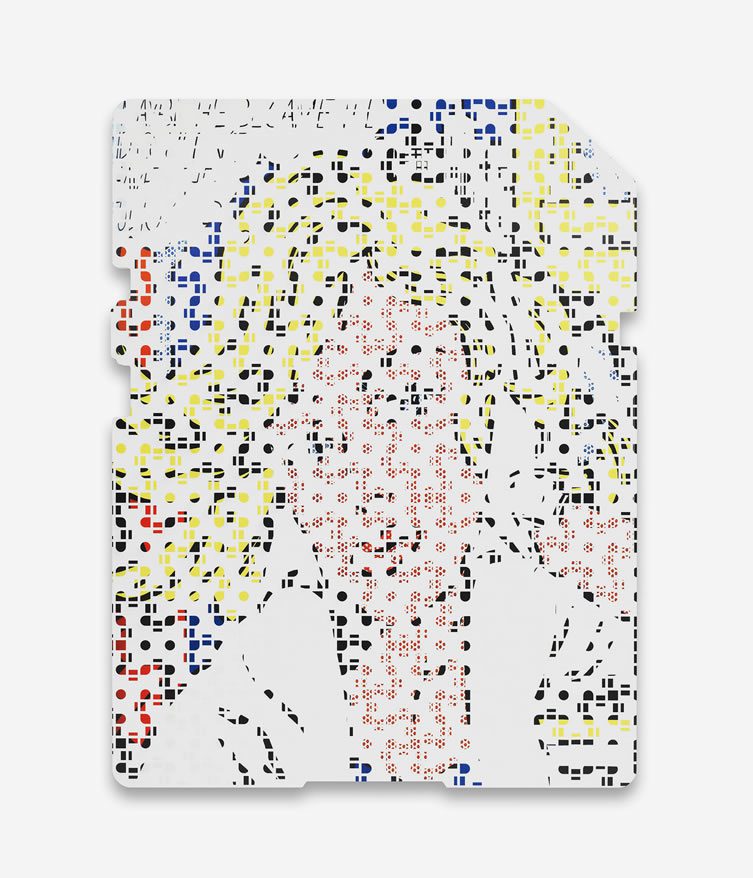
THE PATTERNSTEIN, 2015
Inkjet print and plywood Unique
Size: 200 x 153 x 4 cm / 78 3/4 x 60 1/4 x 1 1/2 in
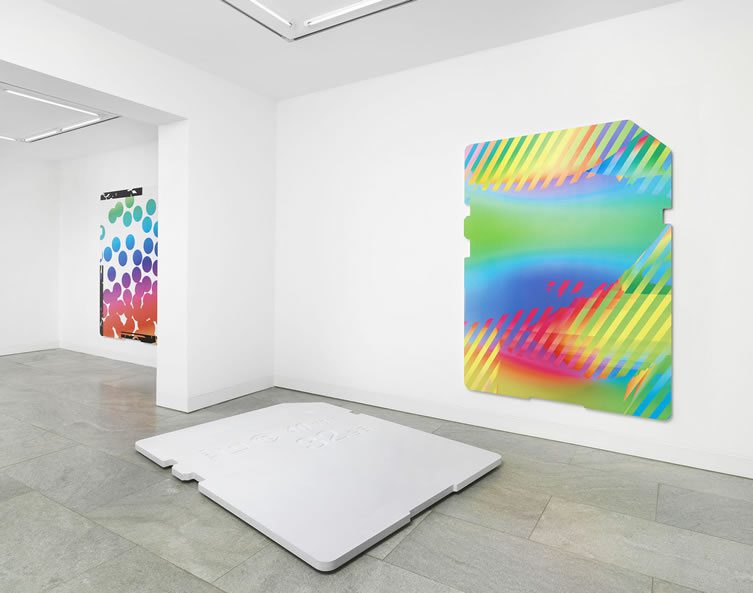
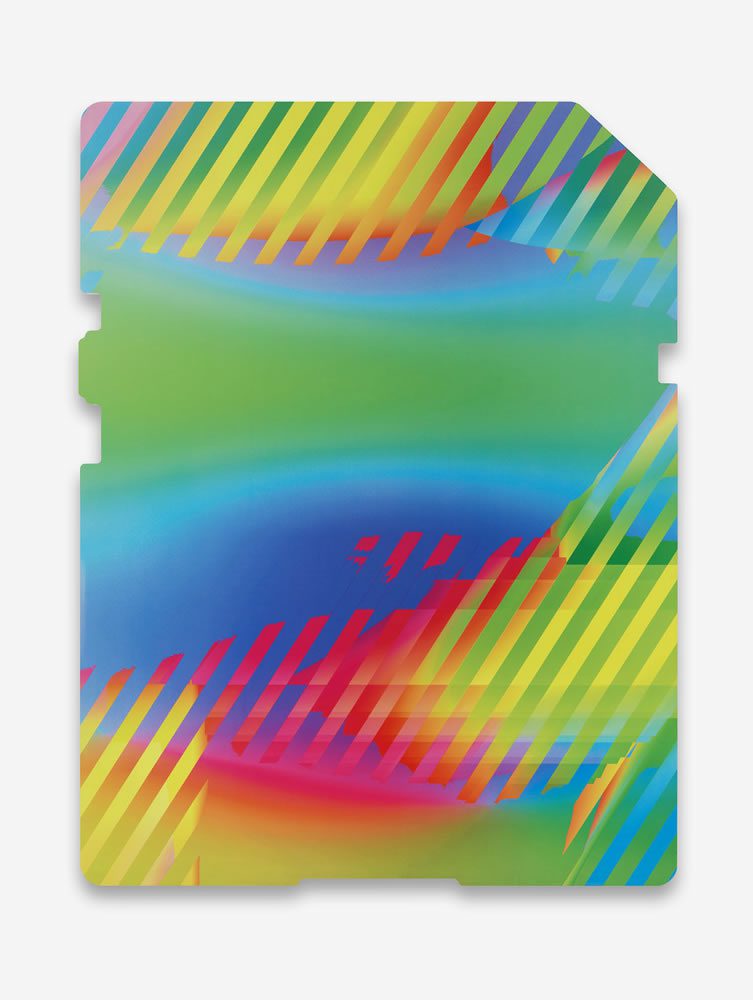
THE FIVE GRADIENT MERGE
(AND MIXED OPACITIES), 2015
Inkjet print and plywood
Unique
200 x 153 x 4 cm / 78 3/4 x 60 1/4 x 1 1/2 in
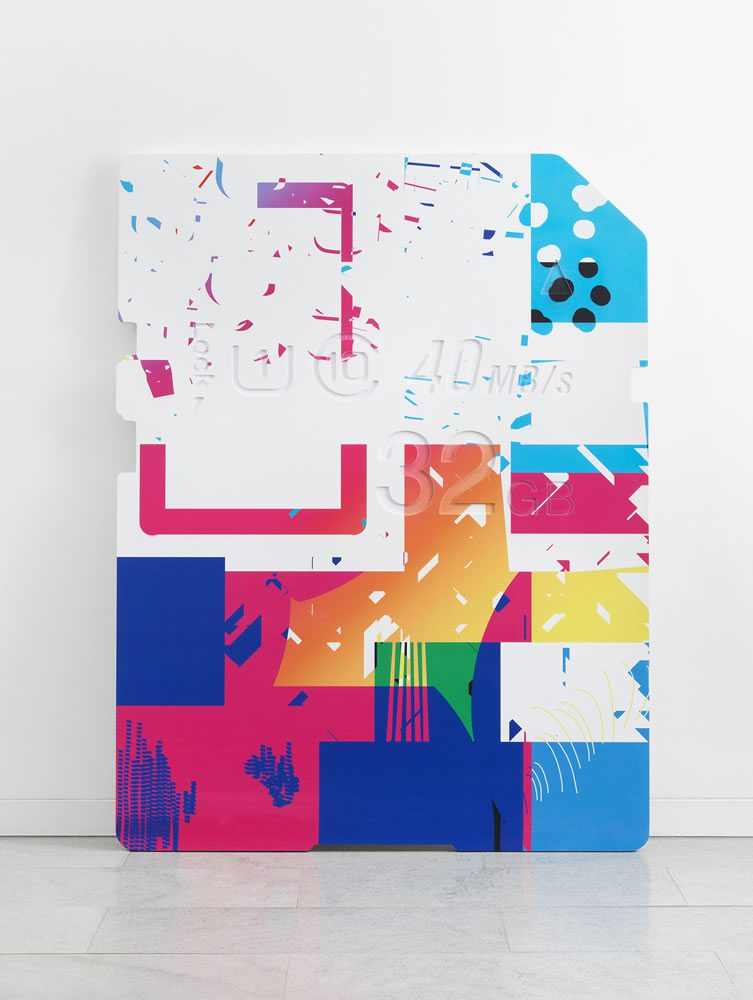
THE 2015 LONDON LAYERS COMPOSITE
(MODIFIED COLORS, SCALED A LITTLE), 2015
Inkjet print and plywood
Unique
Size: 200 x 153 x 4 cm / 78 3/4 x 60 1/4 x 1 1/2 in
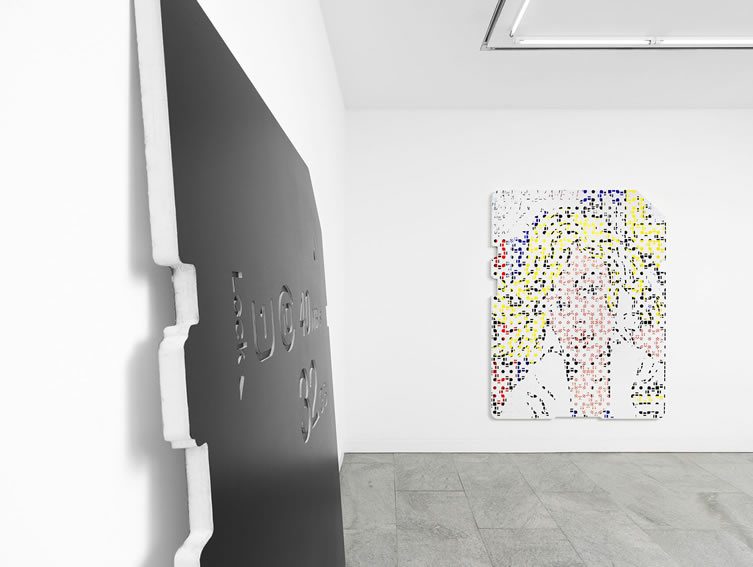
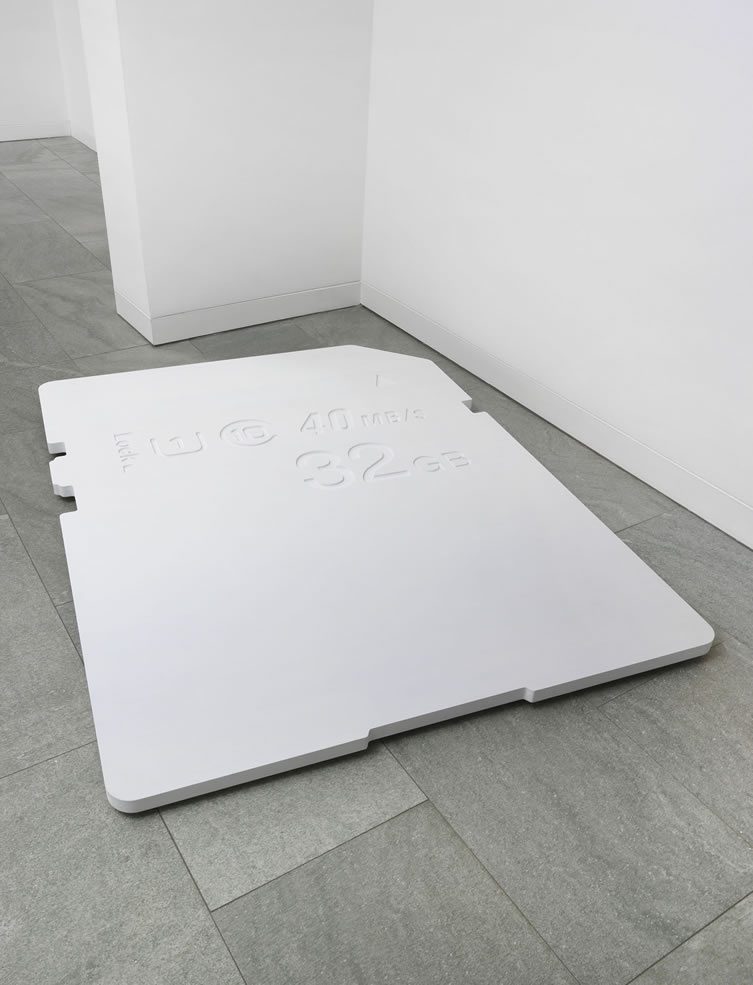
THE NEARLY WHITE, 2015
Inkjet print and plywood Unique
200 x 153 x 4 cm / 78 3/4 x 60 1/4 x 1 1/2 in
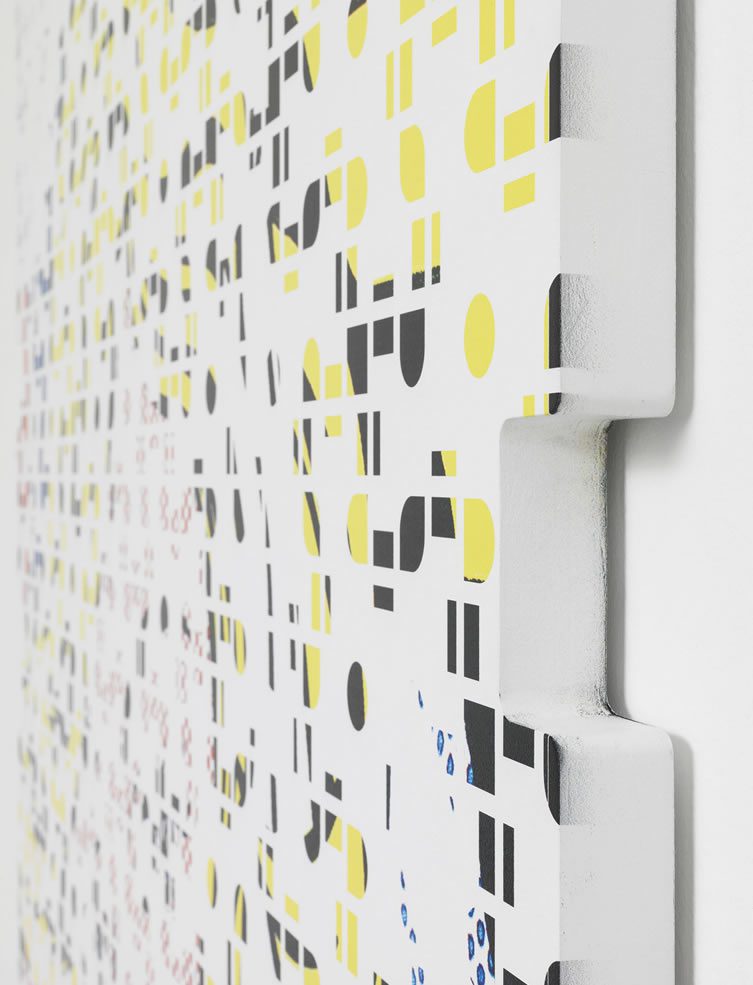
Courtesy, Dittrich & Schlechtriem

